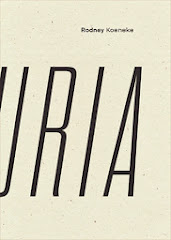 RK
RK: There’s a special embrace and torque of the “feminine” in
[lapsed insel weary], from the cover art on, that I wasn’t sure how to address. Elizabeth Barrett Browning came to mind, partly because of your chapbook
EBB (Port), which you made from erasures of
Sonnets from the Portuguese. But the poems here, too, show an engagement with a long tradition of women writers, and seem concerned with the bonds connecting women across generations. Parts of the book had me thinking how for the Victorian middle class, “memory work” fell mostly to women—forget-me-nots, embroidered memorials, photo albums, tokens of mourning, etc.—along with the ethos of sentiment that sustained those occupations. Your poems seem to use that legacy as part of their material, working against it but also looking for a way to acknowledge its role in creating attachments (particularly between women) that we now need a new kind of language to talk about. Except the poems don’t “talk about” it so much as enact it.
I wonder if it’s anything like this that shapes your particular approach to “experimental” writing, or how you see your work in relation to a modern tradition of women’s writing from Browning through Dickinson to Stein.
Susana Gardner:
I think most first collections deal with many fields that ultimately introduce the poet as thinker, revealing what first created and brought her to the page. And in most cases this is inextricably tied to what is nearest: love, family, environment, economics, whatever has shaped and formed us in this world. I have a hard time reconciling myself to a certain manifestation of femininity in this work, but it is irrevocably there. Of course, I am female, and so hope that this language of linking relationships, namely to ancestors and writers, is there. There is something in femininity that I find darling and beautiful and hope to reclaim or perhaps better to say, not forget. I am glad it is there in enactment vs. any other prescribed recipe: for me this means I have in some way succeeded.
But, at the same time there is much masculinity there, kind of the yin to the yang, as without the opposite, it is not fully possible to have any one thing. With that said, I as writer can tell you that many of these poems are written about my relationship with, and coming-to-be through, my father. There are more father poems than mother poems and I am not sure why, perhaps because I write a lot about his grandmother, the one who encouraged me to be an artist, to write, the grandmother who had desperately wanted to be a painter, but because of economics, situation, and the times simply never lived that dream out for herself. Her life and pain deeply impressed me at an early age.
Around this time I also wrestled with the idea of madness and the artist. Madness created out of the mere chaos and waste of one who is not allowed for whatever reason to create, who is forced to find measure in other sources, hooking carpets, or putting everything, anything which is left of one’s self into one’s children, as this was the only option for many. Reinvesting energies which could be lethal, for some, like my other grandmother, for whom living was simply a time-bomb.
I’m treading into uncertain waters when I say this, but neither I nor writers of the likes of EBB, Dickinson or Stein ever wrote in a tradition of “female writings.” My goal was always to attempt to be the best writer, and search for examples which were already well ahead of me. I never wanted to be the heroine; I wanted to be the hero. I’m not sure how much EBB could find of a female canon per se; it just wasn’t there. Her very reason for writing Aurora Leigh was to create not another female antagonist, but a girl hero. Stein would have had Emily and EBB for initial guidance, but more importantly she had the money and confidence. I also have an affinity for the Victorian period and the writers it fostered. Mina Loy, too, was essential to my development as a poet. Perhaps because in her time, finding a way to produce poetry and art was not easy (it still isn’t!). But Loy had the chance to study and then, later, financial support for most of her life in some vein. But she still had to fight to be an artist. It was not easy, and this comes out in her writing and design throughout her work.
 Alli Warren and Brandon Brown bring it to Portland this Saturday with poetry’s one-man incredible string band, Tom Fisher. Feel free to stick around to feed and water the poets afterwards.
Alli Warren and Brandon Brown bring it to Portland this Saturday with poetry’s one-man incredible string band, Tom Fisher. Feel free to stick around to feed and water the poets afterwards.










